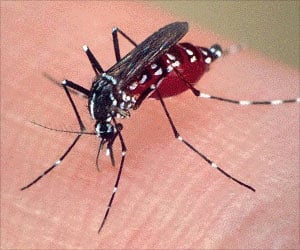Novel drugs that combat resistance to malaria treatment can be designed by determining the changes within the malarial parasite causing resistance and creating drugs that can evade the mechanism of resistance.
Highlights:
- Novel drugs that combat resistance to malaria treatment can be designed by analyzing the changes within the malarial parasite causing resistance.
- Malaria is one of the world's deadliest infectious diseases, claiming several thousand lives each year and treatment is made more difficult by the resistance of the malarial parasite to therapy
- Using methods to find out the structural changes that cause microbial resistance, it is possible to overcome the threat of drug resistance of many infectious diseases and create more effective treatment options
"Evolutionary resistance to frontline treatment is inevitable, it's just a question of time," says Tony Holder, Group Leader at the Crick and senior author of the paper. "By factoring resistance studies into early drug design, we can safeguard from resistance in the years to come. Rather than being on the back foot, we can plan for and prevent resistance."
Read More..
Finding How The Malaria Parasite Develops Resistance to Treatment
- Malaria is a parasitic infection that kills several thousand people each year and effective treatment is further complicated by drug resistance
- Currently, a new class of antimalarial drugs is being developed that block a key enzyme N-myristoyl transferase (NMT) within the parasite. This enzyme is critical for the parasite to enter human red blood cells, where they multiply and cause symptoms of malaria
- The project was undertaken by a unique collaboration of experts across various fields including chemical biology, parasitology and drug discovery
- The study team hoped to determine how resistance develops in the most dangerous malaria parasite, namely Plasmodium falciparum
- During the laboratory study, they found some P. falciparum parasites naturally resistant to treatment after just a few weeks of giving NMT inhibitors
- They compared the genetic makeup of the resistant versus the non-resistant parasites, they detected a small genetic alteration or mutation. They confirmed that the mutation was responsible for the acquired resistance by using gene editing technology.
- The team then employed x-ray crystallography to analyze what structural changes were induced in the malarial parasite by the mutation, leading to drug resistance
- Using this information, the team were able to identify compounds that targeted a different site of the NMT enzyme, aiming to overcome and avoid the existing mechanism of resistance
"Taking an interdisciplinary approach, we were able to identify compounds that evade parasite resistance, making them ideal candidates for potential combination therapy against malaria," explains Anja Schlott, joint Crick/Imperial Ph.D student and first author of the paper.
Potential Applications of Study
- A similar approach to overcome drug resistance for other microbial bacteria, fungi and parasites as well as anti-cancer drug resistance
- The collaboration of various fields of science can potentially contribute significantly to developing newer and effective drug treatments
What is Malarial Drug Resistance?
Resistance to drugs is one of the biggest threats to treat malaria, resulting in increased malarial deaths and complications. Resistance to currently available antimalarial drugs has been confirmed in two of the four human species of malarial parasites namely Plasmodium falciparum and P. vivax.P. falciparum has become resistant to almost every currently available antimalarial drug including mefloquine, sulfadoxine/pyrimethamine, halofantrine, and quinine. Although resistance to these drugs is not very widespread, the impact of multi-drug resistant malaria can be serious in certain parts of the world.
Newer and effective treatments are therefore urgently needed to overcome the threat posed by multidrug-resistant malaria.
Summary
Techniques such as x-ray crystallography can be used to identify the changes in the malarial parasite causing the development of drug resistance, it is possible to design novel drugs that overcome this resistance and make malarial treatment more effective. This method can also be applied to other infections and cancer drugs.References:
- Structure-Guided Identification of Resistance Breaking Antimalarial N‑Myristoyltransferase Inhibitors - (https://doi.org/10.1016/j.chembiol.2019.03.015)
- Drug Resistance in the Malaria-Endemic World - (https://www.cdc.gov/malaria/malaria_worldwide/reduction/drug_resistance.html)
Source-Medindia










